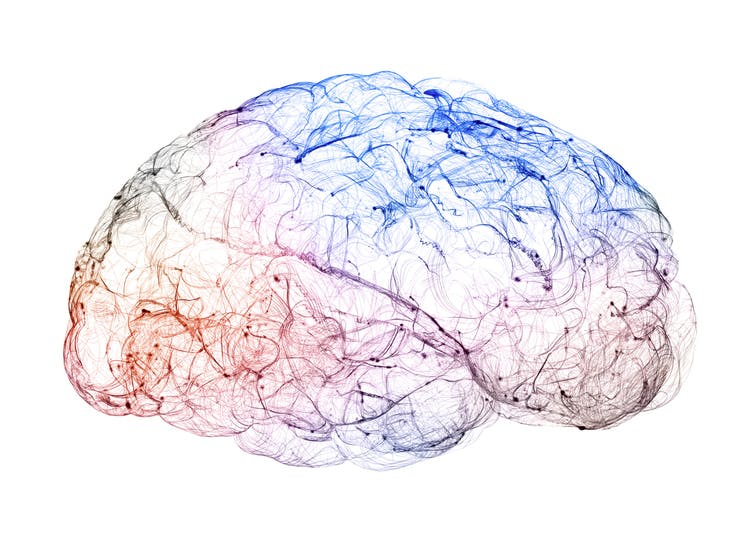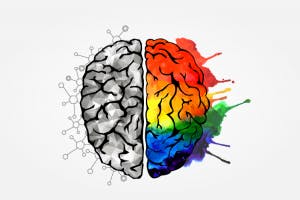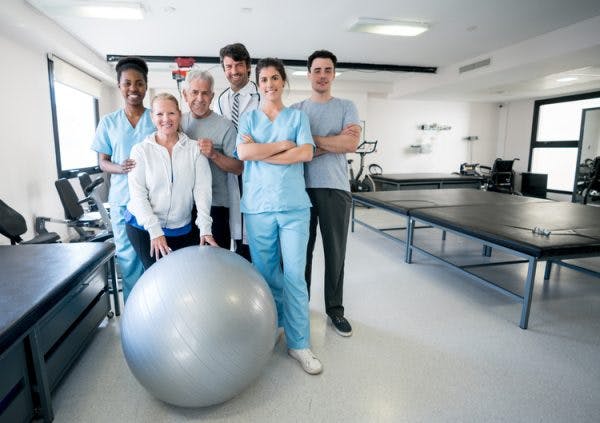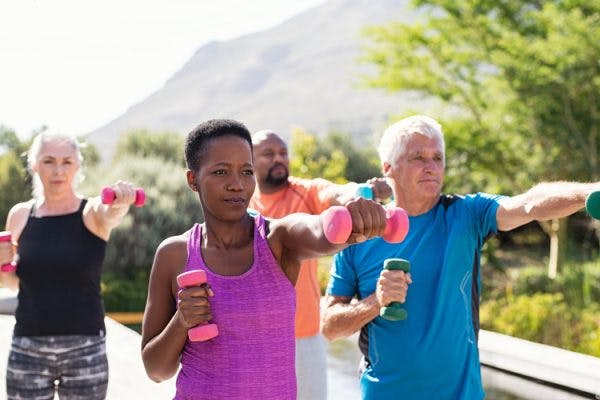Recovery from a neurological injury (such as a stroke or brain injury) should include a holistic and comprehensive approach that includes rehabilitative therapies and natural remedies. In doing so, you can harness the brain’s natural ability to heal from damage.
It’s important to find what works for you because every neurological injury is different. To help you on the road to recovery, this article will share ways to naturally heal brain damage through a variety of methods. Use the following links to jump to a specific section:
Neuroplasticity: Your Brain’s Natural Ability to Heal from Damage
Recovery from brain damage can be a long road, but it’s a road that the brain is naturally equipped to handle. This is because of neuroplasticity, which is an essential concept for recovery from any injury that affects the central nervous system.
Neuroplasticity is a process that allows the brain to continuously adapt and improve its efficiency. It involves the creation and strengthening of neural connections in response to the activities that you frequently practice. This is where the saying “practice makes perfect” comes from.
When brain damage occurs from a stroke or traumatic brain injury, the damaged area cannot be recovered. However, neuroplasticity allows unaffected areas of the brain to take on new functions.
For example, if a brain injury survivor sustains damage in the motor cortex (the area of the brain that contributes to movement) the individual may struggle with arm or leg function. Although the damaged brain cells cannot be recovered, other areas of the brain can substitute for the loss of motion.
The best way to encourage the brain to naturally heal from brain damage is to achieve “massed practice” of the skills that you want to improve. In this case, it would involve practicing rehab exercises for the arm and leg (i.e. physical therapy). This engages neuroplasticity and encourages the brain to rewire itself.
Up next, you’ll learn natural methods that engage neuroplasticity to help you achieve the best recovery possible.
Natural Therapies for Healing Brain Damage

If you’re interested in natural methods for healing the brain, you probably won’t be interested in medication. Fortunately, many of the most effective methods for neurological recovery do not require drugs.
Here are some types of therapy that help heal brain damage naturally by harnessing neuroplasticity:
- Physical therapy. Movement is one of the best, all-natural remedies for brain injury recovery. A physical therapist chooses therapeutic exercises that target your unique needs. When these exercises are practiced with high volume, it helps restore movement in the body by engaging neuroplasticity. It’s one of the best ways to heal brain damage naturally.
- Occupational therapy. While PTs choose exercises that help restore movement in the body, OTs focus on improving your independence with the activities of daily living. For example, while a PT may help improve your arm function, an OT may help with your ability to use a utensil.
- Aquatic therapy. Physical therapy can take place in a pool to help make the body lighter and easier to move. It’s a great option for those interested in a natural, holistic approach to recovery.
- Electroacupuncture. Acupuncture is an alternative treatment that involves placing thin needles into specific “acupoints” on the body. With electroacupuncture, gentle electric currents are applied to the needles. While electroacupuncture alone helps stimulate the body, there is more evidence that it helps improve movement, particularly after stroke, when combined with physical therapy exercises.
- Cognitive therapy. Aside from movement, a brain injury can also affect cognitive skills like memory, critical thinking, and attention. Fortunately, these skills can be improved by practicing cognitive rehabilitation exercises. A Speech-Language Pathologist is a great resource for this.
All of these therapies have something in common: they require massed practice of exercises. Your therapist will choose specific exercises that fit your needs, and your recovery occurs when you practice those exercises on a regular basis. Repetition is the essence of naturally recovering from brain injury.
Typically, therapy is considered the bread and butter of rehabilitation. However, there are other steps you can take to help boost your results, such as optimizing your diet for improved brain function.
Nutrition Therapy

It’s well-understood that a healthy diet is good for the body, and it’s even more important during brain injury recovery. Nutrition therapy seeks to mitigate the effects of secondary brain damage, which refers to the inflammation created in the brain after the initial injury.
As you address your diet, it’s important to first make sure that you are eating enough. A traumatic brain injury causes an increase in metabolism and therefore brain injury patients need more calories and protein.
Pay attention to your diet to make sure that you are eating enough foods to sustain your body’s needs. You can also focus on incorporating natural foods with known brain-boosting benefits.
Some of the best foods for brain injury recovery are:
- Fatty fish: Fatty fish like salmon are a great source of omega-3 fatty acids. These nutrients help reduce the inflammation response that occurs in the brain as a result of free radicals, which is particularly appealing for brain injury survivors that want to curb the effects of secondary brain damage.
- Flaxseeds: Adding flaxseeds to breakfast foods like oatmeal not only helps increase the amount of calories and nutrients in your meal, which provides the brain with the energy it needs to recover, but flaxseeds are another powerful source of omega-3s.
- Dark leafy greens: Dark leafy greens are rich in b-vitamins, which help improve neuronal repair after traumatic brain injury. They are a clear choice for anyone seeking to heal brain damage naturally. Because they are low in calories, it’s important to make them part of a healthy, balanced diet.
- Eggs and avocados: These foods are rich in choline and oleic acid, which help boost cognitive function and offer neuroprotective benefits. They are another great choice for naturally boosting the brain’s ability to recover from injury.
During rehabilitation, many survivors get a chance to work with a dietician, at least initially, to help address your diet. A dietician is a great source of advice on the type and quantity of foods to eat during recovery (and beyond).
Getting Your Vitamins Naturally

Certain vitamins can help naturally boost brain injury recovery. While many of these are available as supplements, you can also get them through your diet, which may interest those seeking natural methods of recovery.
Some of the best evidence-based vitamins for brain injury recovery are:
- Omega-3 fatty acids: These nutrients are known for improving overall brain health and promoting neurogenesis: the process of creating new neurons in the brain. They can be found in fatty fish like salmon and certain nuts and seeds like flaxseed. They offer a straightforward way to help heal brain damage naturally.
- Vitamin B12: Vitamin B12 helps the body produce myelin sheaths, which coat the nerves and allow electrical impulses to travel efficiently. Vitamin B12 is primarily found in animal products such as meat and dairy. Brain injury survivors require ample protein and calories for the body to recover, and natural sources of B12 can help you reach your needs.
- Antioxidants: After a brain injury, inflammation and the production of free radicals (unstable molecules) increase in the brain. To help counteract this effect, antioxidants help eradicate free radicals and reduce inflammation. Thus, to help heal brain damage naturally, seek antioxidants from vibrantly-colored produce like oranges, grapefruit, tomatoes, blueberries, and apples.
By eating a variety of healthy foods, you can reach your daily values of vitamins and minerals naturally. If you ever find that your diet lacks variety or foods that are naturally nutrient-rich, you can consider supplementing the vitamins that you’re missing. Be sure to check with your doctor before taking any new supplements as they can interact with certain medications or exacerbate preexisting health conditions.
Naturally Healing from Brain Injury
As you can see, there are many natural methods for promoting brain health and healing brain damage naturally. Although damaged brain cells cannot be restored, the brain’s natural ability to rewire itself through neuroplasticity is the key to recovery.
Therapeutic interventions like physical and occupational therapy seldom require drugs. Instead, they require hard work and dedication as you put in the repetitions to rewire the brain. Therapy is one of the most effective all-natural methods of recovery.
To boost your results, you can take care of your body and brain by making sure that you’re eating enough to sustain your body and eating a variety of nutrient-dense foods. We hope this article helped you understand the amazing resilience of the brain and what you can do to recover from brain injury naturally.










